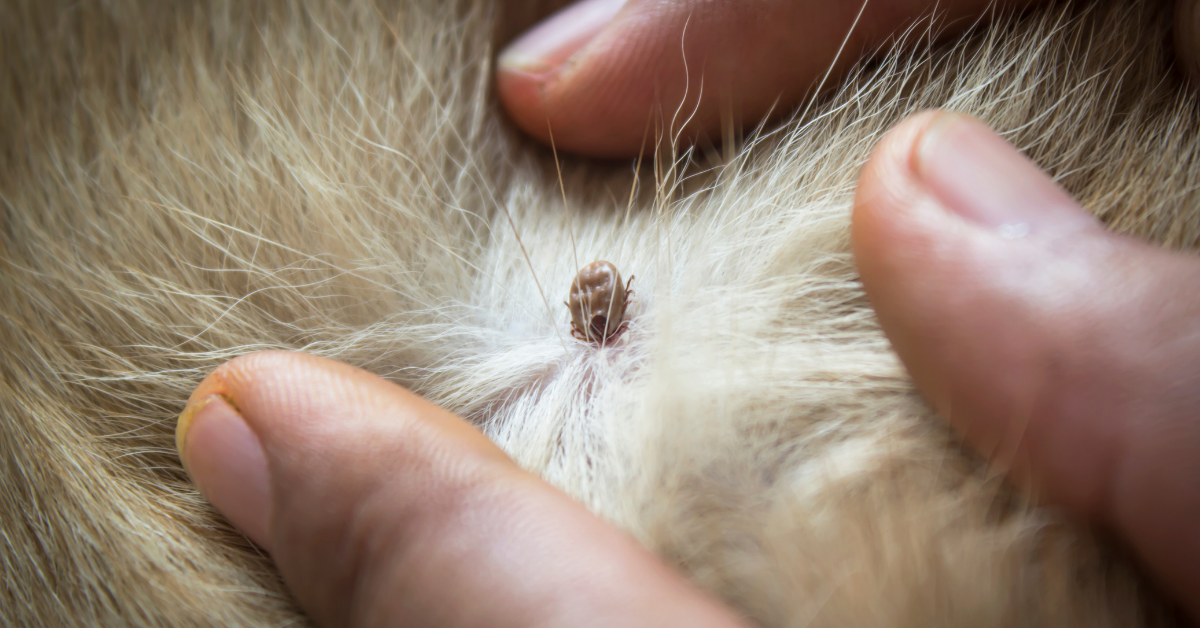
Ticks aren't just unsightly pests. They're also dangerous to your dog's health, carrying diseases like Lyme, Anaplasmosis, Rocky Mountain Spotted Fever and Ehrlichiosis. All of which can have long-term, and sometimes deadly consequences for your dog.
And it's not just the occasional dog that's affected by ticks.
According to the Companion Animal Parasite Council, in 2020, one in 20 dogs tested were positive for Lyme Disease. And more than 247,000 (or 1 in 30) and 244,000 (also 1 in 30) were diagnosed with Anaplasmosis and Ehrlichiosis (both life-threatening illnesses).
As if they know they're in the wrong, ticks will go out of their way to hide themselves on your dog. Knowing where to look for ticks gives you the best chance to find them before they can damage your pup's health.
But where do ticks like to hide on dogs?
Here are the seven most common spots on your dog where ticks hide.
Don't forget, the best defense against ticks is to keep them off your dog in the first place. Veterinary Formula's Flea & Tick Spray provides 14 weeks of protection against both parasites. And, if you do find a tick (or fleas), Veterinary Formula's Flea & Tick Shampoo kills both on contact.
Ticks have a natural instinct to search out unexposed areas of your dog's body that are dark and warm, and where they're less likely to be disturbed by a dog scratching, biting or licking at it.
And what's warmer and darker than your dog's groin and armpits, both of which rarely, if ever, see the light of day.
The armpits, the area where a dog's front legs meet his body, is also a tough spot for dogs to scratch or bite. Making it harder for them to dislodge the tick on their own.
Under the tail is another favorite spot, especially with dog breeds that keep their tails low and close to their bodies. Dogs with docked tails, like Dobermans, Boxers and Rottweilers don't provide the same warm, dark under-tail experience. But that doesn't mean you shouldn't check anyway!
Other favorite spots where ticks hide on dogs are those areas that have less fur and offer easy access to skin they can burrow into. Like your dog's elbows, which is the back of the first joint on your dog's front legs. Depending on the breed of dog, the elbows are often located quite close to the underarm, where we already know ticks like to hang out as well.
Ears are one of the most common places for ticks on dogs. In fact, finding a tick on dogs' ears is so commonplace, we find it hard to call ears a hiding spot!
With that said, the inside of your dog's ears is a good hiding spot. When doing a tick check on your dog, don't forget to look both on and in the ears. Ticks can go pretty far in, so use a flashlight to look as deep in as you can.
Out of sight, out of mind. Considering that most owners rarely take their dogs' collars off, it's not surprising that the skin around the neck is an oft-forgotten spot to check for ticks.
But that's prime real estate for them. It's dark and warm. And, depending on the collar, your dog's skin may be more exposed there making it easier for ticks to burrow into.
Plus, the collar itself might be something a tick hitches a ride on, before making its way into your dog's fur.
The next time you're doing a tick check on your dog, don't just look underneath the collar. Take it off and check both the collar and your dog's fur and skin.
Also easily forgotten, but finding ticks on dogs' paws isn't uncommon. In particular, the bottom of your dog's feet and between his toes are two of the most common places for ticks on dogs.
They both provide easy access to the skin to dig into. And, like other nooks and crevices on your dog's body, the space between his toes is less exposed, something ticks instinctively look for when finding a new host.
Another commonly overlooked spot during tick checks are your dog's eyelids. But while it may seem like there's not enough skin there for a tick to burrow into, it's more than enough.
Look carefully when checking. A tick that hasn't attached yet might look like eye discharge. And a tick that's only partially engorged may look like a skin tag.
Product Picks